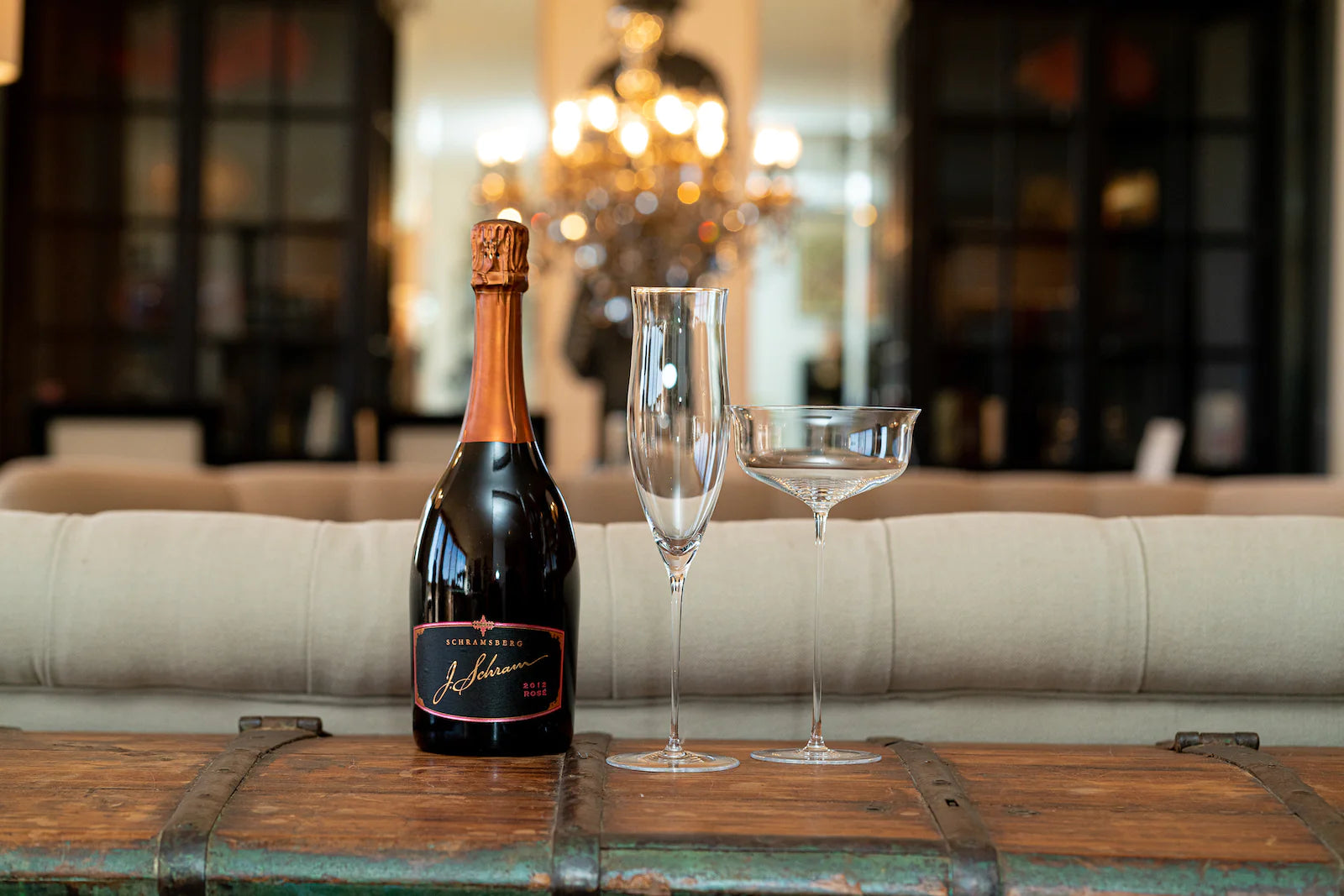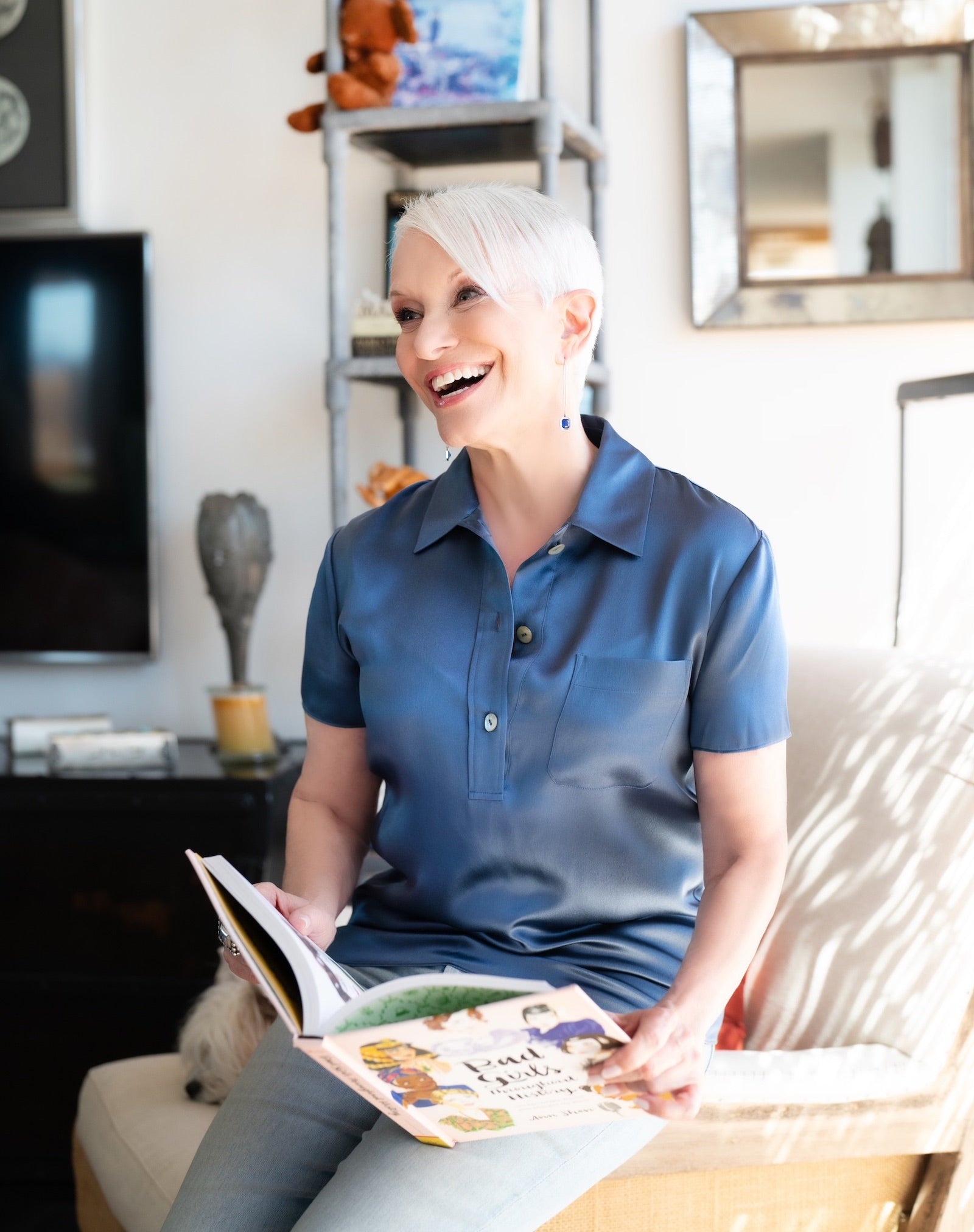Champagne, Home Entertaining
How to Taste Champagne: The Art of Tasting Champagne

Beneath all the exciting bubbles in a glass of Champagne lies an even more decadent array of flavors, aromas, and textures to be explored. Tasting Champagne is a dynamic and sophisticated art that’s also accessible enough for anyone to enjoy. Here are my top recommendations to help you elevate the experience of tasting Champagne by learning the proper technique. By the time you reach the end of this article, you’ll be ready to pour yourself the perfect, cold, bubbly glass of sparkling like a true professional.
Types of Champagne for Tasting
There are many different types of Champagne to taste. Consider the style or blend that you want to bring to your table next:
- Brut: The French word for “dry”, Brut Champagne is one of the most popular choices to indulge in. There are several blends of Brut, each determined by its level of sweetness and acidity. Best served chilled, this unrefined sparkling wine pairs best with fatty and rich foods.
- Dry: Slightly higher in sugar, Dry and Extra Dry champagnes are sweeter than Brut, but less tart. A distinguished bottle of Prosecco will treat your palette.
- Rosé: Full of bright, fruity flavors, Rosé is an enjoyable taste all around.
- Sweet: If you are looking for something sweet, Demi-sec blends are the best choice. Doux is the sweetest variety of all champagnes, containing 50 or more grams of sugar.
Prepping to Taste Champagne
Tasting Champagne is a form of art - it is more than just popping the cork and pouring it into any glass. To get the best-tasting experience for your favorite bottle of bubbly, consider the type of glass you’ll need for your drink of choice and how to prep it.
Types of Champagne Glasses
The type of Champagne glass you choose is essential to your tasting experience. Knowing and understanding the distinction between each type can help you decide which glass will be best for the highest quality taste.
1. Flute
Flutes are a classic glass of choice for tasting Champagne and my favorite shape of glass! The flute displays a tall and thin shape, with a narrower mouth and bowl. This helps to preserve the bubbles of the Champagne, encouraging a crisp effervescence. The length of the stem also plays a role by allowing you to hold the glass comfortably, while still keeping the glass away from your hands, which will warm your wine.
2. Tulip
Another commonly chosen glass for Champagne is the tulip. Tulips are ideal for Champagne tasting because of how their shape gradually widens in the center of the glass. This allows the aromas to fully develop, as well as gives space for the bubbles to accumulate and pop. Tulips also maintain a longer stem, so that you can avoid warming your wine or leaving finger smudges along your glass.
3. Wide Tulip
Much like the tulip, the wide tulip Champagne glass offers the same graceful shape, but the wideness of the bowl is lower and located towards the stem. This is practical for collecting aged flavors found in fine sparkling wines, like vintage Champagne.
4. Coupe
Popular in the 1950s, the coupe-style Champagne glass has a very wide, open bowl and a shorter stem. The shape of the coupe glass allows the bubbles to disperse, which helps soften the taste (if you don’t like too many bubbles, this is a good type of glass to use).
Cleaning the Glass
Wine glasses are delicate, especially those made of fine crystal, and require gentle handling. You’ll want to make sure that your glass is properly washed or rinsed to ensure an outstanding appearance and performance for your Champagne tasting. An improperly washed glass can often be at fault for flat bubbles.
Never put your Champagne glasses in the dishwasher. While this might seem like the simplest way to wash them, most stems are too tall and delicate to secure and Champagne glasses can often come out of the wash cloudy, or worse, broken. Follow these steps to properly clean your Champagne glasses:
- Wet your Champagne glass with warm water before washing (hot water can cause the glass to crack). Always cup the glass by the bowl with your hand, never by the stem. The stem is very thin and can easily slip from your fingers.
- Using a sponge (long-handled if necessary), lightly scrub and buff the inside of the bowl. Do not try to fit your hand into the mouth of the glass as this can risk breaking it.
- Clean the stem, base, and outer surfaces of glass with a soft sponge. If your glass has residue, you can use a drop or two of a quality, fragrance-free dish soap, though this is not necessary.
- Rinse thoroughly in warm to hot water and air dry on a clean towel by placing the glass mouth down.
- Rinse your clean Champagne glasses with warm water before use, and leave them to drain and dry. This will remove any soap or ‘rinse aid’ residue that may have been missed in the washing process.
Pouring Champagne
Adding just the right amount of Champagne to your glass will guarantee you a pleasurable tasting. When pouring, grip the bottom of the bottle with your hand, placing your thumb in the depression in the center of the base. Tilt the glass at a 45-degree angle to reduce the amount of foam and keep from disturbing the flavors (just as when pouring a beer).
To give your bubbly time to open, fill your glass no more than two-thirds of the way. This will allow all of the aromas and flavors to develop, presenting you with a fabulous sensory experience.
Temperature
Champagne is best served chilled, ideally between 8-10 degrees C (47-50 degrees F), depending on the complexity and age of the bottle. There are multiple methods for chilling your champagne bottles to reach the ideal temperature.
The Best Way to Taste Champagne
Perfecting the art of tasting Champagne requires more than simply sipping a glass of bubbly - and the sensory experience goes beyond your sense of taste! When tasting Champagne, you will use three of your senses to experience your fine, sparkling wine.
Sight: Look closely at your glass of Champagne. Take a moment to note the qualities of the contents in your glass:
- Color: The color of your Champagne can vary depending on the blend and age of the wine. Typically, younger blends can look a lighter or pale yellow, whereas aged blends tend to be a deeper gold hue.
- Bubbles: You’ll want to look to see how the bubbles rise in your glass. An excellent bottle of Champagne should have small, lively bubbles, which give a crisp and fresh taste.
- Clarity: A properly fermented bottle of Champagne will always look crystal clear. Bubbly that seems murky or cloudy may not exhibit the full flavors or aromas.
Smell: Lift the glass to your nose and lightly breathe in the aromas of your Champagne. Focus on the nuances of scents your Champagne gives off to detect the intensity of how it will taste. Vibrant hints of citrus and candied tones are all common in a good bubbly, but the fragrance can also contain notes of yeast and minerals depending on the age and blend.
Taste: Now it is time to taste your Champagne! Bringing it to your lips, gently tip the glass and take a small sip while inhaling at the same time. Allow the flavors to unfold in your mouth for a moment. Observe the distinct characteristics of your wine:
- Flavor: The flavor of your Champagne can truly bring your tasting experience full circle. Champagne flavors are determined by the residual sugar in each bottle. An Extra Dry bubbly, like a fine Prosecco, will have a sweeter, fruity taste, whereas a drier Brut, like my favorite Dom Pérignon, will tend to have flavors of yeast or warm bread, as well as hints of melon and apple.
- Mouthfeel: Aside from flavor, the way the liquid feels in your mouth is a key component of wonderfully balanced Champagne. The mouthfeel of good Champagne will feel smooth and almost creamy on the tongue. The bubbles should feel tight and crisp, without being too sharp. The mousse, or the foam, can also be included in the sensory experience.
If a bottle is opened incorrectly (it makes a loud pop or loses a lot of mousse), this can impact the mouthfeel, by taking away from the various flavors and decreasing the quality of the tasting experience.
To help you visually understand the tasting process, Charles Heidsieck shares a lovely video on the proper way to taste your Champagne.
The Best Glasses To Serve Champagne
The glass you pour your Champagne into can heighten the experience - whether you are hosting a full dining event or just indulging in the sophisticated lifestyle. As an avid host and luxury lifestyle enthusiast with 25 years of experience, I’ve come to recognize that having an exceptional glass is a staple in tasting Champagne. Here are the five best Champagne glasses I recommend for your tasting enjoyment.
Glass 1: Fran Berger Signature Champagne Flutes
My signature glasses are handmade, 100% lead-free, crystal glasses made in the Czech Republic, designed for those who appreciate the luxury of fine, high-quality tableware. These classic, chic flutes will upgrade any Champagne tasting experience - from a formal gathering to a simple, intimate moment.
Best for tasting: Any and all fine Champagnes whether that be a Veuve Clicquot La Grande Dame or a lively Rosé.
Cost: $260 per pair
Glass 2: Baccarat - Mille Nuit Flutissimo
The Mille Nuits Flutissimo adds flair to your next tasting occasion with its sleek narrow shaped and beveled stem. This beautifully designed glass also comes in various shades to match your unique style.
Best for tasting: Any high-quality Demi-sec or Blanc de Blancs to preserve their crisp, tight bubbles.
Cost: $520 per pair
Glass 3: Moser - Mozart Champagne Glass
Displaying a combination of Rococo accents and modern crystal, the Mozart Champagne Glasses are a one-of-a-kind piece to add to your table setting and will be a conversation starter for all your hosting occasions, big or small!
Best for tasting: Enjoy with an aged Brut or Extra Brut sparkling wine.
Cost: $177 per piece
Glass 4: William Yeoward Crystal - Lally Champagne Flute
I have always loved unique, antique influences in my crystal and Willaim Yeoward never disappoints. Stylishly taste your favorite Champagne with the handmade crystal Lally Champagne Flutes.
Best for tasting: Perfect for entertaining with a bright Rosé or sweet Demi-sec.
Cost: $215 per piece
Glass 5: Table Art - Ambassador Champagne Flute
These classically-designed glasses are perfect for creating magical, intimate moments every time.
Best for tasting: Experience the taste and aromas of your favorite bubbly in these glasses.
Cost: $149 per piece
Conclusion
Tasting Champagne is a rich and luxurious experience when done right. By selecting the right Champagne glassware for both taste preference and visual style, caring for them correctly, and, of course, incorporating all of your senses into the tasting experience, you'll elevate every gathering occasion for your guests, and for yourself! Happy tasting!
























